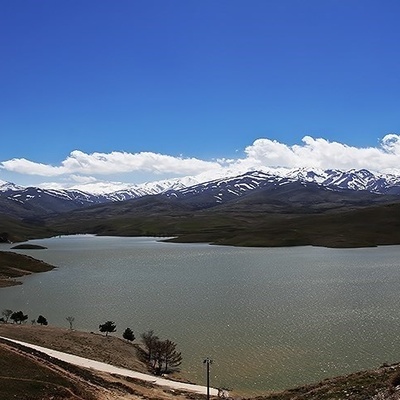Saed News: The lake known as "Cheshm-e Zamin" (Eye of the Earth) is one of the astonishing wonders of creation, located in Croatia. The appearance of this lake closely resembles a human eye.

According to the Saed News analytical news site, quoting Fararu, the world around us is full of wonders, many of which have yet to be discovered. From various parts of the galaxy to the most remote corners of the Earth, the universe is filled with the most intricate mysteries of creation. If we were to grab a backpack and travel the world, we would encounter numerous natural and historical sites—some of which remain relatively unknown. However, thanks to the mysterious world of the internet, today you can explore these fascinating places with just the click of a button and be amazed by their beauty.
You may be surprised to learn that the Earth, much like a human, also has an eye—an actual black eye with turquoise-colored eyelids! The lake known as the "Eye of the Earth" in Croatia is one of nature's most astonishing phenomena that you absolutely must see. So join us on this virtual journey to explore it.
The Blue Eye (in Croatian: Modro Oko) is a turquoise-colored spring located on the border between Croatia and Bosnia and Herzegovina. On the Earth’s surface, right where the slopes of the Dinara Mountain end, you suddenly come across a wide and deep hole that strikingly resembles a human eye. This spring is the source of the Cetina River, located on the Dinara slopes, and its breathtaking beauty comes from its vibrant colors—turquoise, azure blue, teal, and emerald green. The spring emerges from an underground cavity about 150 meters deep and contains exceptionally clear, pure water. Viewed from above, it looks like a massive eye, seemingly adorned with turquoise and azure shadows on its "eyelids," which is why it’s famously called the "Eye of the Earth."

About the Eye of the Earth
The Cetina River, which originates from the Eye of the Earth and flows along the slopes of Dinara Mountain, is a stunning sight in its own right. After traveling a 101-kilometer path, it eventually flows into the Adriatic Sea. The source of the Cetina River is also considered a historical and archaeological site. Archaeologists have uncovered remains of Roman legionnaire weapons and medieval tools in and around the riverbed.
Visiting the Eye of the Earth is so fascinating that it attracts a large number of tourists every year. Those who are braver and seek unique experiences take a dip in its clear waters and swim on its surface for a one-of-a-kind experience—swimming in the center of Earth’s eye!

However, exploring the underwater areas of this region is not permitted, and diving is prohibited. After the discovery of this beautiful and astonishing spring, some professional divers managed to reach a depth of 115 meters into the hole, but due to the unknown nature of its depth, further exploration has not been possible so far.
In conclusion, if you're planning a worldwide travel adventure, we highly recommend adding a visit to this stunning "eye" to your itinerary—consider it a must-see from us!

